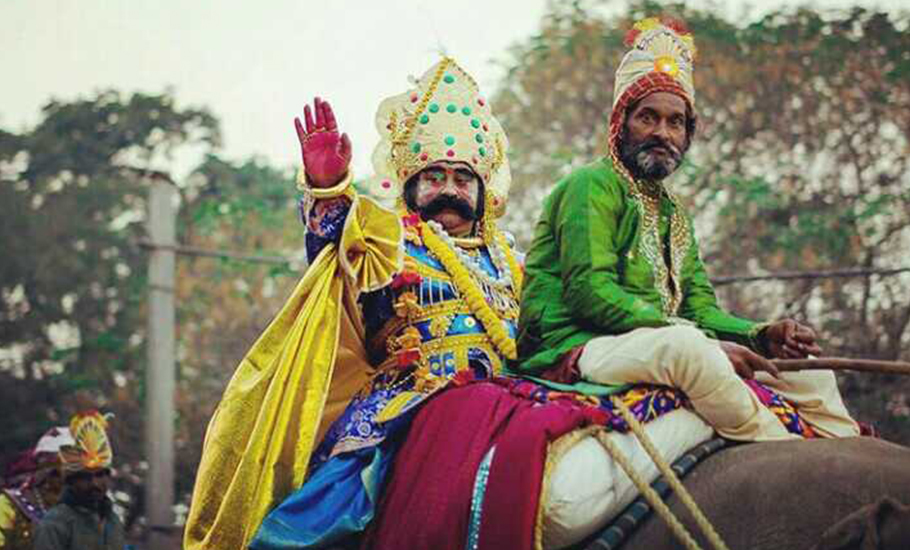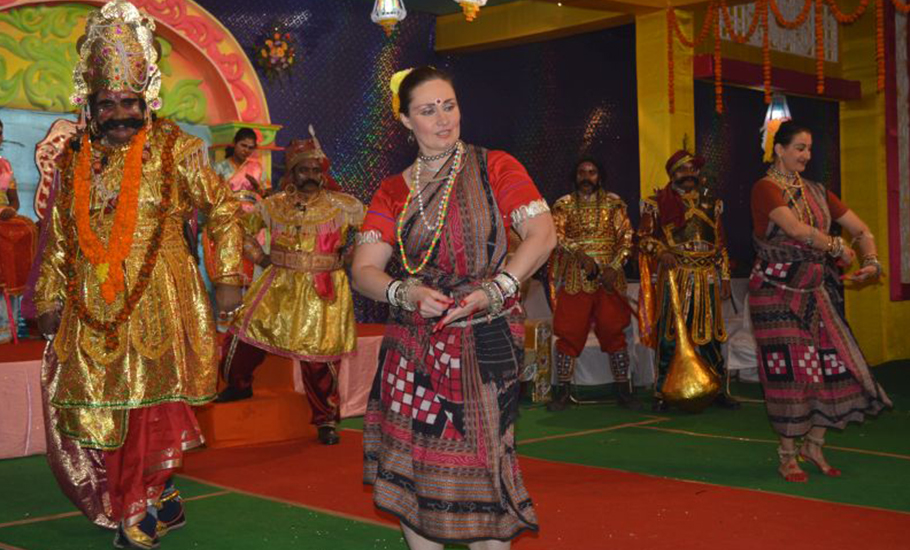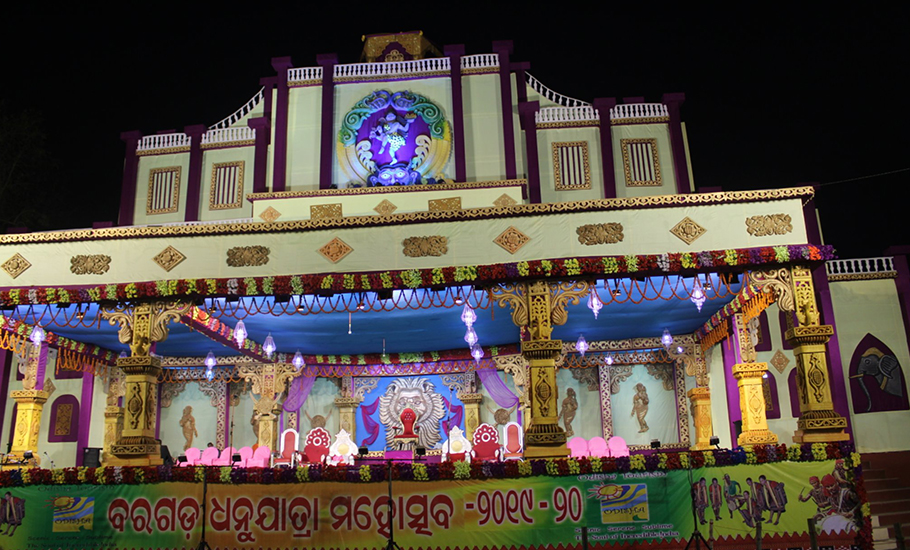
- Home
- News
- Analysis
- States
- Perspective
- Videos
- Education
- Entertainment
- Elections
- World Cup 2023
- Features
- Health
- Business
- Series
- Economy Series
- Earth Day
- Kashmir’s Frozen Turbulence
- India@75
- The legend of Ramjanmabhoomi
- Liberalisation@30
- How to tame a dragon
- Celebrating biodiversity
- Farm Matters
- 50 days of solitude
- Bringing Migrants Home
- Budget 2020
- Jharkhand Votes
- The Federal Investigates
- The Federal Impact
- Vanishing Sand
- Gandhi @ 150
- Andhra Today
- Field report
- Operation Gulmarg
- Pandemic @1 Mn in India
- The Federal Year-End
- The Zero Year
- Premium
- Science
- Brand studio
- Home
- NewsNews
- Analysis
- StatesStates
- PerspectivePerspective
- VideosVideos
- Entertainment
- ElectionsElections
- Sports
- Loading...
Sports - Features
- BusinessBusiness
- Premium
- Loading...
Premium

Dhanu Yatra cancelled, Odisha reminiscences good old days of ‘Mathura Nagari’

Mathura, since 1948, has been ‘undertaking’ a unique annual journey spanning over 1,400 kms to land in Odisha’s Bargarh. Bargarh then hosts Mathura for about 11 days as Ambapalli, located on the outskirts of the town, transforms into Gopapura and river Jeera, flowing to the west of Bargarh, becomes the Yamuna. A pond by its side transforms into lake Kalindi. Bargarh, on its part,...
Mathura, since 1948, has been ‘undertaking’ a unique annual journey spanning over 1,400 kms to land in Odisha’s Bargarh. Bargarh then hosts Mathura for about 11 days as Ambapalli, located on the outskirts of the town, transforms into Gopapura and river Jeera, flowing to the west of Bargarh, becomes the Yamuna. A pond by its side transforms into lake Kalindi.
Bargarh, on its part, travels back in time to the mythological Dwapar Yug in which lord Krishna is said to have been born. While local newspapers in the district use ‘Mathura Nagari’ as the dateline, government officials see summons arriving from king Kansa, maternal uncle of lord Krishna. What’s more? The officials answer the summons by presenting themselves before the ‘court’, answering questions on administration and paying fines for lapses in discharging their duties. All of it forms part of world’s largest open air theatre, Dhanu Yatra, also known as Dhanu Jatra, performed over eight square kilometres.
Every year in the month of Dhanu or Pausa, between December and January, the popular Dhanu Yatra, sees Bargarh blur the lines between theatre characters and real humans, between incidents and performances.
This extravaganza, which was to take off today after being postponed in December, however, has been cancelled in the face of rising Omicron cases. Last year also, the Dhanu Yatra was cancelled due to Covid restrictions.
“Considering the rising Covid cases for the past few days, the event has been cancelled even this year,” Dhanu Yatra Mahotsav Samiti (DYMS) secretary, Sureswar Satpathy, told The Federal.
Myth-laced reality
The popular festival came into existence in 1948 amid ongoing festivities of Independence from the British Raj. It is said that labourers in Bargarh started the festival equating the end of Kansa’s tyrannical rule with the colonial reign. Dhanu Yatra has been performed every year since 1948 except for 1965 when it was halted due to the Indo-China war.
As part of the festivities, over 110 artistes recreate mythological stories driven from the Mahabharata, involving the childhood of Krishna and how the evil king Kansa meets his death at Krishna’s hands.
As it grew bigger and attained a status and visibility that remains hitherto unparalleled, Dhanu Yatra saw use of moveable as well as static stages.
Since 2005, the Nishamani School ground has been used as Rangamahal—cultural stage for the festival.
The myth of Dhanu Yatra is so intertwined with the local culture and daily life that ‘Mathura Nagari’ becomes a ‘reality’ during the 11 days. “The event takes people right back to the ‘Dwapar Yug’ in a live concert. Its message is loud and clear: Good is always good and bad is always bad,” explains BJP’s Bargarh MP, Suresh Pujari.
The event is unique in more ways than one. Krishna’s evil uncle Kansa, the main attraction of the event, is no ordinary hero. He is used as an agent of social change. Another attraction is that artists don’t follow a written script. They deliver dialogues on their own and improvise on situations as they arise.
The most striking feature of the event is how hundreds of artists hailing from across Odisha carry the show in a synchronised manner over 11 days.
As the people of Bargarh are forced to be ‘ruled’ by the tyrannical Kansa, Ambapalli (Gopapura) residents shower their love and affection to Krishna and Balaram. The residents observe strict vegetarian diets during the course of the 11 days and every household looks forward to the opportunity to wash the feet of the characters, playing gods. They also hand paint their houses depicting various mythological stories centered around the life of Krishna.

“One has to experience the yatra with their own eyes to get an idea about how magical the entire show is,” says Bargarh resident, Umesh Biswal, who runs Gana Drushti, a YouTube channel.
Kansa’s procession
The biggest draw of the event is the afternoon procession of the demon king Kansa. Majestically seated on a caparisoned elephant, twirling his bushy moustache, Kansa tours the town. Often, he breaks into hysterical laughter, yelling at the passersby. More than 2,000 people in combat attire constitute Kansa’s processions at different locations.
Equally sought after is Kansa’s Raj Darbar (royal court). The district collector and superintendent of police are regularly summoned by Kansa to his court on an illuminated makeshift stage. As subjects of the ‘king’, the officers give accounts of the welfare works they have undertaken in the area. Apart from other officials, ministers—both state and central- also attend the court.

The king also imposes fine (though nominal in nature) on wrongdoers.
Incidentally, in the early 1990s, the then chief minister Biju Patnaik (father of the incumbent CM Naveen Patnaik) had flown down to Bargarh from Bhubaneswar in the state aircraft after being summoned by Kansa. Mounted on an elephant, he reached the venue but was late by a few minutes. An unforgiving Kansa penalised CM Biju Patnaik with a monetary fine.
Pujari, who was present on the occasion, says that addressing Biju as ‘Kalinga Naresh’ (King of Kalinga), Kansa enquired about the people-centric programmes being run by his government. “Biju Babu promptly and willingly rattled out answers with all humility. He seemed to have enjoyed every moment. A series of sweet dialogues between the most powerful king and the legendary Biju Babu followed. It was great fun for the audience,” recalls Pujari.
Former Odisha chief secretary Jugal Mohapatra, too, had a chance encounter with Kansa. It was 1997 and Odisha was staring at a drought. On his way back, post an assessment trip to affected districts (Bargarh, Bolangir, Kalahandi, Nuapada) reeling under a drinking water crisis, Mohapatra, who was rural development secretary, appeared at the darbar.
“King Kansa asked me what steps had been undertaken to tide over the crisis, and I offered the details.” recounts Mohapatra. “Ordering for quick and adequate measures, the king said, I will keep a close watch,” he adds.
Interestingly, Biju Patnaik was not the only chief minister to have paid the fine. Before him, in the late 1960s, the then CM Rajendra Narayan Singh Deo too faced Kansa’s ‘wrath’ for overtaking the processions.
According to Satpathy, the car in which Deo was travelling to Bolangir, tried to overtake Kansa’s procession. “Those days the National Highway ran through the Bargarh municipality and the number of vehicles was far too few. If a vehicle attempted to overtake Kansa’s elephant, it was fined. So, Deo had to cough up the penalty,” narrates Satpathy.
Even the media hasn’t been spared. Once, Kansa had pulled up local representatives of two Odia news channels for not ensuring good coverage to the Dhanu Yatra.
“He represents the voice of the people and is seen as someone who, on the behalf of the masses, holds people in high positions and authority to account. The common people see authority as something remote and distant, so they rejoice when Kansa takes those in power and position to task,” reasons former bureaucrat Aurobindo Behera.
The economic angle
Fun, emotion, art, mythology, history and politics apart, economics is also a vital aspect of the event. It’s a source of livelihood for thousands, including artists and traders, who flock to the event from different corners of not just Odisha but other states as well. It provides an opportunity for people to sell handicraft items, food, toys, household goods among others.
The Meena Bazar, a big attraction of the event, draws huge crowds. Locals say Meena Bazar sees over 5,000 shops spring up when Dhanu Yatra is underway. Small local traders earn half of their entire year’s income during the 11-day festivities. The stalls selling Sambalpuri saris and clothes are said to witness the maximum footfall.
On an average, over one lakh people, including from adjoining Chhattisgarh, throng the event.
According to estimates, the market witnesses business worth Rs 500 crore during this period. “Families love to spend and indulge in the festive atmosphere,” says Satpathy.
Besides the main artistes, around 120 cultural troupes consisting of over 3,000 artistes—local and from Chhattisgarh —perform at the Raj Darbar and Rangamahal. Elephants, camels and horses too are brought in for the event. In 2020, the expense of the event stood at Rs 1.2 crore.
But the artistes don’t make much. The artiste playing Kansa is paid Rs 40,000, including the cost of his trip to Puri. A day after the curtains are down, along with his ministers, he visits Puri, takes a dip in the sea and seeks forgiveness from Kansa’s nephew Krishna (lord Jagannath).
Others get paid abysmally low—Rs 300 per day and food. But a number of them are happy despite the low daily remuneration. “Here, no artist performs for money,” claims Satpathy.
For the artistes, the attraction of the platform overrides the amount of money earned. Hrusikesh Bhoi, who essayed Kansa’s character for nine years with aplomb and continues to attract crowds wherever he goes, considers himself extremely lucky.

“Getting a chance to play on this stage as Kansa or any other character is like a dream come true. The love and respect we receive through our life make us feel blessed,” says Bhoi, an ambulance driver.
Retired Bargarh district cooperative bank employee, Lalit Mohan Panda, popularly known for his portrayal of Akrura’s character for the last 28 years, echoes Bhoi’s sentiments.
“There is something special about the yatra and its stage. It gives us a feeling that money can’t buy,” says Panda as he shares a personal incident.
Some years ago, ahead of the Dhanu Yatra, having broken his right leg, Panda was advised bed-rest for a month. The attraction of stage, however, pulled him and he donned the attire. In a particular act, where Akrura has to walk at least one km on the river bed, Panda, with a stick in hand, covered the distance on the sands along river Jeera to the adulation of onlookers. Post the event, with a swollen leg and pain, he was back on the bed again, though for a few more days.

